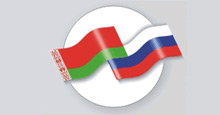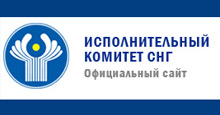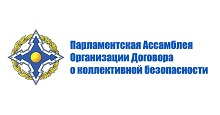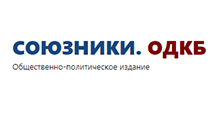On 24 April 2024, in Moscow, at the CSTO Secretariat consultations of the CSTO member states under the chairmanship of the Republic of Kazakhstan on the theme: "On topical issues of arms control, disarmament and non-proliferation" took place.
From 1 to 23 April 2024, the Military Academy of the General Staff of the Armed Forces of the Russian Federation hosted the regular IX Training Courses of the CSTO member states for senior staff and leading specialists of defense departments, law enforcement agencies, security council apparatuses, security agencies and special services, as well as bodies authorized to prevent and eliminate emergency situations.
On 22 April 2024, the CSTO Secretariat hosted a working meeting between the Deputy Secretary General of the Collective Security Treaty Organization, Samat Ordabaev, and the Special Representative of the UN Secretary General for Central Asia, Head of the UN Regional Centre for Preventive Diplomacy for Central Asia (UNRCCA), Kakha Imnadze.
The Ministry of Defense of the Russian Federation declassified documents on the capture of Berlin in 1945
02.05.2020Text: Alexander Stepanov
On May 2, 1945, the Red Army stormed the German capital, Berlin. On the occasion of the 75th anniversary of the capture of the “Third Reich’s” hide-out by the Soviet troops, the Ministry of Defense of the Russian Federation uncovered unknown pages of this strategic operation, which were previously classified as "secret." The multimedia section "The Final chord of the Great War" is opened on the website of the military department, where everyone can get acquainted with unique documents from the funds of the Central Archive of the Ministry of Defense.


Photo: Evgeny Khaldey/TASS
The Berlin offensive operation, which is also called the final chord of World War II, began on April 16, 1945. The purpose of this strategic operation was to defeat the main forces of the German army groups “Vistula” and “Center” to capture Berlin, access the Elbe River and join the Allied forces.
The Battle of Berlin
The beginning of the assault on the hide-out of Nazi Germany was scheduled for April 20. The operation to capture Berlin was carried out by the 1st Belorussian Front under the command of Marshal of the Soviet Union Georgy Zhukov and the 1st Ukrainian Front under the command of Marshal of the Soviet Union Ivan Konev.
The declassified documents on the Berlin offensive have been published
The website of the Ministry of Defense published combat statements. It becomes clear from them what fierce resistance the soldiers of the Red Army had to overcome. So, on April 28, 1945, units of the 5th Shock Army under the command of Colonel-General Nikolai Berzarin fought heavily in the streets of the city and occupied 27 city sections, including taking the state printing house and the Anhalt station house. Already on April 29, battles began for the Reichstag, which was entrusted with capturing the 79th Rifle Corps of the 3rd Shock Army.
The website of the Ministry of Defense published a combat statement of the 1st Belorussian Front. In particular, it said that the Nazis offered particularly stubborn resistance in the Reichstag area. "On the stairs and in the main building of the Reichstag, the struggle repeatedly turned into hand-to-hand fights. Elite units of the SS defended the Reichstag area. To strengthen the defense of this area, the enemy parachuted a battalion of marine infantry," the statement said.
Photo: Evgeny Khaldey/TASS
Battles for the Reichstag
The Nazis turned the Reichstag into a real stronghold. The building was one of the most important objects in the defense system of the city. Around the Reichstag deep ditches were made, obstacles were installed, machine-gun and artillery firing points were equipped. The Reichstag garrison numbered about 1000 soldiers and was armed with a large number of guns, machine guns and faustpatrones.
A complete list of units and formations that captured Berlin has been published
“Continuing the offensive and breaking up the enemy’s resistance, the units of the 3rd Shock Army occupied the main building of the Reichstag and raised the Soviet flag on it on April 30 at 14:25. The offensive in the city of Berlin continues ...”, the commander of the 1st Belorussian Front, Marshal of the Soviet Union George Zhukov reported to Commander-in-Chief Joseph Stalin. Tough battles inside the Reichstag lasted until May 1. Separate groups of Germans who settled in the basements capitulated only on May 2.
The combat statement of the commander of the 1st Ukrainian Front, Marshal of the Soviet Union Ivan Konev, said that "today, May 2, 1945, after nine days of street fighting, the troops of the 1st Ukrainian front,... together with the troops of the 1st Belorussian Front, captured Berlin. ... In just one day – On May 2, 1945, 34 thousand enemy soldiers and officers were captured ... 37 tanks, more than 150 guns and a large number of other weapons and property. The commander of the 286th Infantry Division Major General von Roben was among the captured officers ".
Also on the website of the Ministry of Defense, an order was issued by the commander of defense and the last commandant of Berlin, artillery general Helmuth Weidling. In this document, he calls on the German troops defending the city to immediately stop resistance. In particular, the order stated that "on April 30, 1945, the Führer committed suicide. We, who swore allegiance to him, were left alone. ... Lack of heavy weapons, ammunition and general situation make this fight pointless ... prolong the terrible suffering of the civilian population of Berlin and ours the wounded. " Addressing the German soldiers, Weidling emphasized that everyone who dies in the struggle for Berlin would make a vain sacrifice and demanded an immediate end to the struggle.
Photo: Evgeny Tiklhanov/RIA Novosti news agency
Assistance to city residents
The Soviet command tried to provide food to the population of Berlin. There were more than 2 million civilians in the city who needed to be fed. Assistance to civilians was provided even when fierce battles were fought in the city. So, the officials were sent instructions on the organization within personal responsibility of accounting for the availability of food, grain, livestock and potatoes. In addition, the Soviet command determined food standards for various categories of citizens, introduced a card system. 105 thousand tons of grain, 18 thousand tons of meat products, 4.5 thousand tons of fat and 6 thousand tons of sugar were allocated to supply the population of Berlin.
Military archives about the liberation of Budapest 75 years ago are declassified
The Military Council of the 1st Belorussian Front decided to allocate up to 3 kg of bread, 0.5 kg of meat, almost 1.5 kg of sugar, 350 grams of natural coffee, as well as vegetables and dairy products per Berliner per week. Hospitals and pharmacies of the city were also provided with medicines.
In addition to Berlin, the Soviet command helped the civilian population of other German cities - Dresden, Chemnitz, Stettin.
Work of commandant’s offices
Military commandant's offices were created in Berlin, when the fighting was still in full swing. So, the commander of the 5th Shock Army, Colonel General Nikolai Berzarin, was appointed military commandant of the city on April 25, 1945. Already on April 28, he issued Order No. 1, which guaranteed civilians safety and life.
Military commandant’s offices in Berlin quickly solved very complex and important tasks for establishing a peaceful life. The city was on fire, most of the buildings were mined, Berlin's infrastructure and economy were almost completely destroyed.
The commandant's offices resolved issues of organizing warehouses and restoring the most important factories of the food industry. The Soviet command sent to Berlin as first aid 96 thousand tons of grain, 60 thousand tons of potatoes, about 50 thousand livestock, as well as sugar, fats and other products.
"As a result of all these measures, not only the threat of hunger for the population was eliminated, but also a solid foundation was created to ensure a normal supply of the city for the future ... The Soviet command saved many thousands of Berliners from starvation - this was a manifestation of genuine humanism inherent in our people," such words are contained in one of the declassified documents.
Photo: Evgeny Khaldey/TASS
Humanity to the enemy
The Red Army also helped the captive Germans. In particular, the declassified resolution of the Military Council of the 1st Belorussian Front on the organization of medical care for wounded and sick prisoners of war stated that among the captured enemy soldiers and officers there were a large number of wounded, exhausted and sick. More than 12 thousand German soldiers have accumulated in front hospitals. "The Military Council of the front decides to organize three collector hospitals, each for 5 thousand people," the resolution emphasizes.
Reconstruction of Berlin
With the support of military commandant's offices, the newly created self-government bodies began to rebuild the city. Soviet sappers built 34 automobile bridges on the main highways of Berlin, cleared many buildings and entire city sections of mines.
All iconic cultural heritage sites were taken under protection to ensure their safety. Soviet soldiers guarded the archive, the house in the park and the house-museum of Johann Goethe with Martin Luther's cell in the Augustinian monastery.
Soviet troops searched for paintings by famous artists. Thanks to painstaking work were found paintings of Rembrandt, Rubens, VanDyke and other great masters.
Photo: Mark Redkin/TASS
Heroism of soldiers
Numerous award documents published on the website of the Ministry of Defense testify to the courage and bravery of the Red Army soldiers.
Raising the banner over the Reichstag recreated in virtual reality
In particular, declassified archives tell about Senior Sergeant Ilya Syanov. His squadron from the 756th Infantry Regiment was the first to break into the Reichstag building. The Nazis tried to drive the soldiers out of the building for 24 hours - set fire to the house, threw grenades at them. Several times the clothes caught fire on Syanov, there was nothing to breathe. In this battle, a squadron of senior sergeant destroyed up to 150 fascists and captured 300 of them.
The documents also describe the 15-year-old Red Army soldier Ivan Nikolaev, who participated in street battles. The award sheet, according to which he was awarded the medal "For Military Merit," said: "Taken as an orphan."
The website of the Ministry of Defense talks about the medical instructor of the 2nd Tank Battalion of the 1st Guards Tank Brigade Raisa Kolinko. The girl provided first aid to Soviet tank soldiers during fierce battles in the Berlin direction. Raisa Kolinko, risking herself, saved the wounded, pulling them out of burning tanks. On April 18 alone, a medical instructor assisted 28 wounded colleagues in the Diedersdorf area. During their evacuation, the girl noticed tanks and self-propelled guns of the enemy in ambush. Having reported this to the command, she helped the tank soldiers destroy two tanks, two self-propelled guns and four guns.
Thousands of Soviet soldiers and officers participated in the fighting to capture Berlin. Many of them died and were buried in Germany and Poland. In June 1945, in order to eternalize their memory, it was decided to create fraternal cemeteries in the cities of Seelow, Berlin, Brandenburg, Rathenov, Charlibbe, Schoenhausen, Warsaw, Kustrin and Kolberg. Monumental memorials were erected in the burial places. For this, military construction units were involved, as well as workers and architects from the local population.














